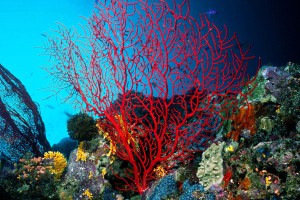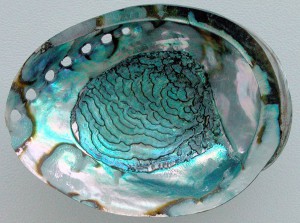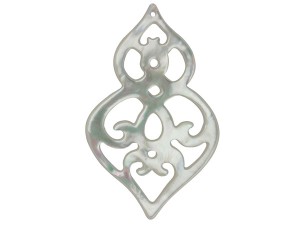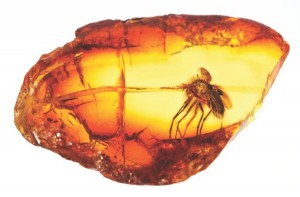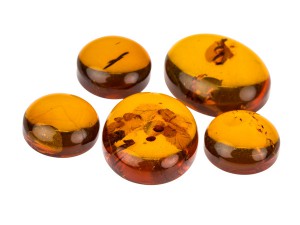Aside from pearls, (which I have covered in previous articles), the rich minerals and deposits found in our oceans produce a range of unique materials perfect for use in jewellery making:
Coral: Coral is basically the skeletal remains of a marine organism known as coral polyps. It grows into vast tree-like structures forming branches of vivid red, pink, white and blue which have been harvested for use in jewellery for thousands of years. Due to its popularity, stocks of shallow growing coral have been overfished to catastrophic affect and have subsequently been deemed a protected species.
In its raw state, coral is completely matt, however once harvested, cut and polished it displays the most beautiful, intense glossy shine which makes it extremely desirable. It is very soft, only measuring 3 on Mohs scale of hardness which means it is usually cabochon cut, carved or tumbled into beads which have a sort of resinous quality. Comprising essentially of calcium carbonate (the same substance as pearls), coral is very sensitive to heat and acids so is prone to fading with wear. Like many marine materials, it requires great care to ensure its longevity. Coral has a strong association with protection, particularly of children, which goes back as far as Roman times and is often presented as a gift for this very purpose.
Mother of Pearl: Mother of Pearl or nacre, is the name given to the thin layers of iridescent calcium carbonate which form on the inside of certain types of mollusc and the hard outer surface of the pearl. Typically mother of pearl can be found inside large pearl oysters, abalone shells (paua) and top shells (Trochidae) as well as fresh water mussels.
As you might expect, Mother of Pearl is extremely brittle due to its layered structure so is often used in slices retaining a thick piece of the original shell. It is a popular material for buttons as well as a whole host of other decorative applications including inlay, watch bezels, cutlery, mosaic tiles and of course jewellery. Commercially it is treated in a similar way as pearls with most pieces undergoing some degree of bleaching or dyeing to enhance the natural colours.
Amber: Although not originating from the sea, most amber is in fact washed up on the coasts of the Baltic region in Poland where it has lay on the seabed for millions of years.
As the landscape of the earth evolved, forests became oceans and glaciers made way for mountains which is why we find the remains of sea creatures in rock faces and tree resin in the ocean. Amber is formed when tree resin becomes fossilised over a long period of time (several million years). The most prized pieces have the remains of insects trapped inside which would have occurred before the resin solidified. It has an amorphous structure which essentially means it is formless and lacks any crystal composition as you might expect.
Like many other products of the sea, Amber is extremely soft (2.5 on Mohs scale of hardness) and is consequently cabochon cut or made into beads or other carved shapes. Like Opal, it does have a tendency to crack if exposed to heat or sunlight for prolonged periods so is better stored in a cool, dark place.
Finally I just need to briefly mention some of the other treasures that can be found washed up on our shores and easily gathered and utilised in jewellery making. Glass, wood and pebbles take on a fabulously worn and rounded appearance when exposed to the repetitive motion of the waves and make interesting beads once drilled. Although not formed in the sea, they all bear the marks of the ocean and have a lovely natural feel when composed into pieces of jewellery. Best of all they are free which makes them perfect for experimenting and trying something new, but with no outlay which is always good!
Do you like to use products from the ocean in your jewellery making? If not, what not give it a try using something from Cooksongold’s full range of Mother of Pearl and Amber gemstones.


Cooksongold

